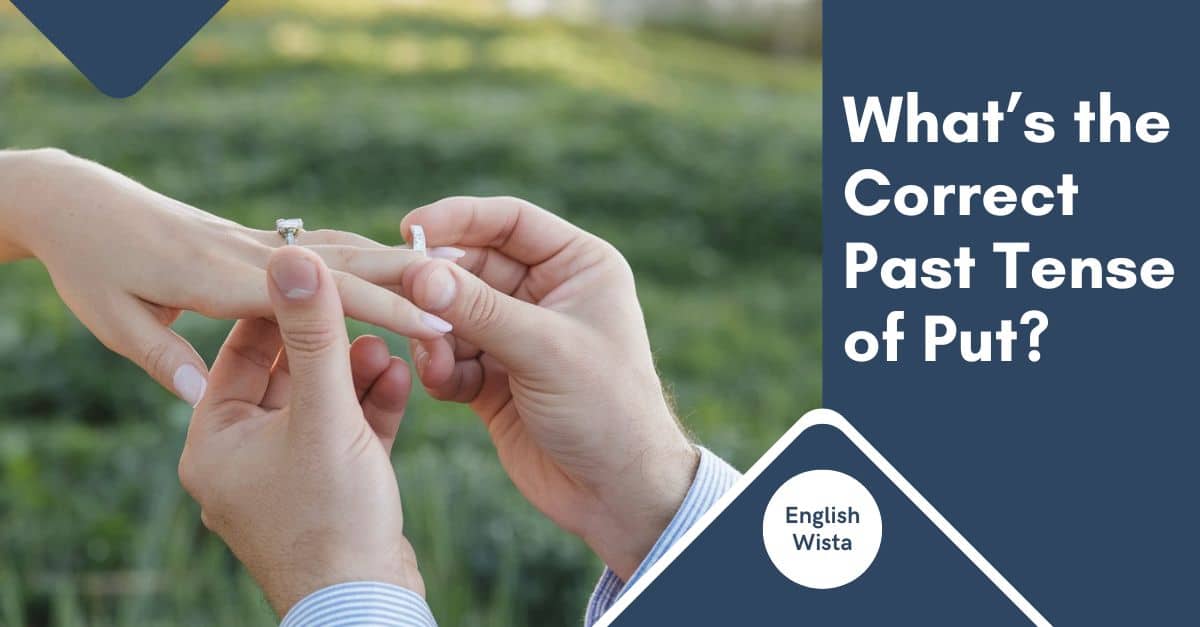Did you know the past tense of put is surprisingly simple? Unlike most verbs, put remains the same in the present, past, and even past participle forms. But why does it break the usual rules of English grammar? That’s where things get fascinating!
If you’ve ever paused mid-sentence, wondering how to use this word correctly, you’re not alone. In this article, we’ll clear up all the confusion and give you tips to use put confidently in any tense. Keep reading—you’re about to master one of English’s quirkiest verbs!
What’s the Past Tense of Put?
Here’s the straightforward answer: The past tense of “put” is also “put.” Yes, you read that right! Unlike many English verbs, “put” doesn’t change its form in the past tense. Whether you’re talking about something you did yesterday, last week, or even years ago, the word stays exactly the same.
For example:
- Present: I put the book on the table every morning.
- Past: Yesterday, I put the book on the table before leaving.
Sounds simple, doesn’t it? But why is it like this? Let’s explore further.
Why Doesn’t “Put” Change?
“Put” belongs to a special group of verbs called irregular verbs. Many irregular verbs in English follow unique patterns, and “put” is one of the simplest. It stays the same in its base form, past tense, and past participle.
Here’s a quick comparison:
- Base form: put
- Past tense: put
- Past participle: put
This simplicity is both a blessing and a source of confusion. Why? Because we’re so used to verbs changing their form (like “go” turning into “went”) that when one doesn’t, it feels a bit odd.
Common Misconceptions About Put
Many learners mistakenly think the past tense of “put” must be something like “putted.” While this might seem logical, it’s incorrect. “Putted” is not a valid word in standard English, though it does exist in golf terminology (as in, “He putted the ball towards the hole”). But that’s a completely different usage and unrelated to our everyday “put.”
So, always remember: In regular usage, the past tense of “put” is just “put.” Easy, right?
Real-Life Examples of “Put” in Action
Let’s look at some examples to see how “put” works in different tenses:
- Present tense: I put my keys on the counter every evening.
- Past tense: Last night, I put my keys on the counter before bed.
- Future tense: Tomorrow, I will put my keys in a safer place.
Notice how “put” doesn’t change in the past tense? This consistency makes it easy to use, once you get the hang of it.
A Quick Tip for Remembering
If you ever find yourself second-guessing the past tense of “put,” just think about this simple sentence:
“Yesterday, I put my phone on the table.”
If it sounds correct, you’ve got it right! If it sounds awkward (like “Yesterday, I putted my phone…”), you know it’s wrong.
Fun Fact: The Origin of Put
Did you know that “put” is one of the oldest words in the English language? It comes from Old English and has roots in several Germanic languages. Over centuries, it has retained its simplicity, making it one of the easiest verbs to learn and use.
Other Verbs That Don’t Change in the Past Tense
“Put” isn’t the only verb that stays the same in the past tense. Here are a few more examples:
- Cut: She cut the paper yesterday.
- Set: He set the alarm before going to bed.
- Hit: I hit the ball really hard during the game.
These verbs share a similar pattern, so once you’ve mastered “put,” you can apply the same rule to these.
Is It Singular or Plural?
A common question is whether “put” changes depending on whether the subject is singular or plural. The answer is no. “Put” stays the same no matter who or what is doing the action.
Examples:
- Singular: She put the groceries away.
- Plural: They put their coats on the hooks.
Practical Usage: Everyday Scenarios
Here are some more examples to help you see how “put” fits into everyday conversations:
- I put my phone on silent during the meeting.
- He put the letter in the mailbox this morning.
- We put our heads together to solve the problem.
- They put up decorations for the party last night.
Notice how natural it sounds in all these sentences? That’s the beauty of “put”!
Conclusion: Keep It Simple with Put
So, what have we learned? The past tense of put is… “put”! It’s one of the easiest verbs to remember because it doesn’t change its form. Whether you’re speaking in the past, present, or future, “put” stays the same.
Next time you need to use “put” in the past tense, you can do so with confidence. Just remember: No extra endings, no changes, and no worries! Keep practicing, and soon it will feel as natural as saying hello.



